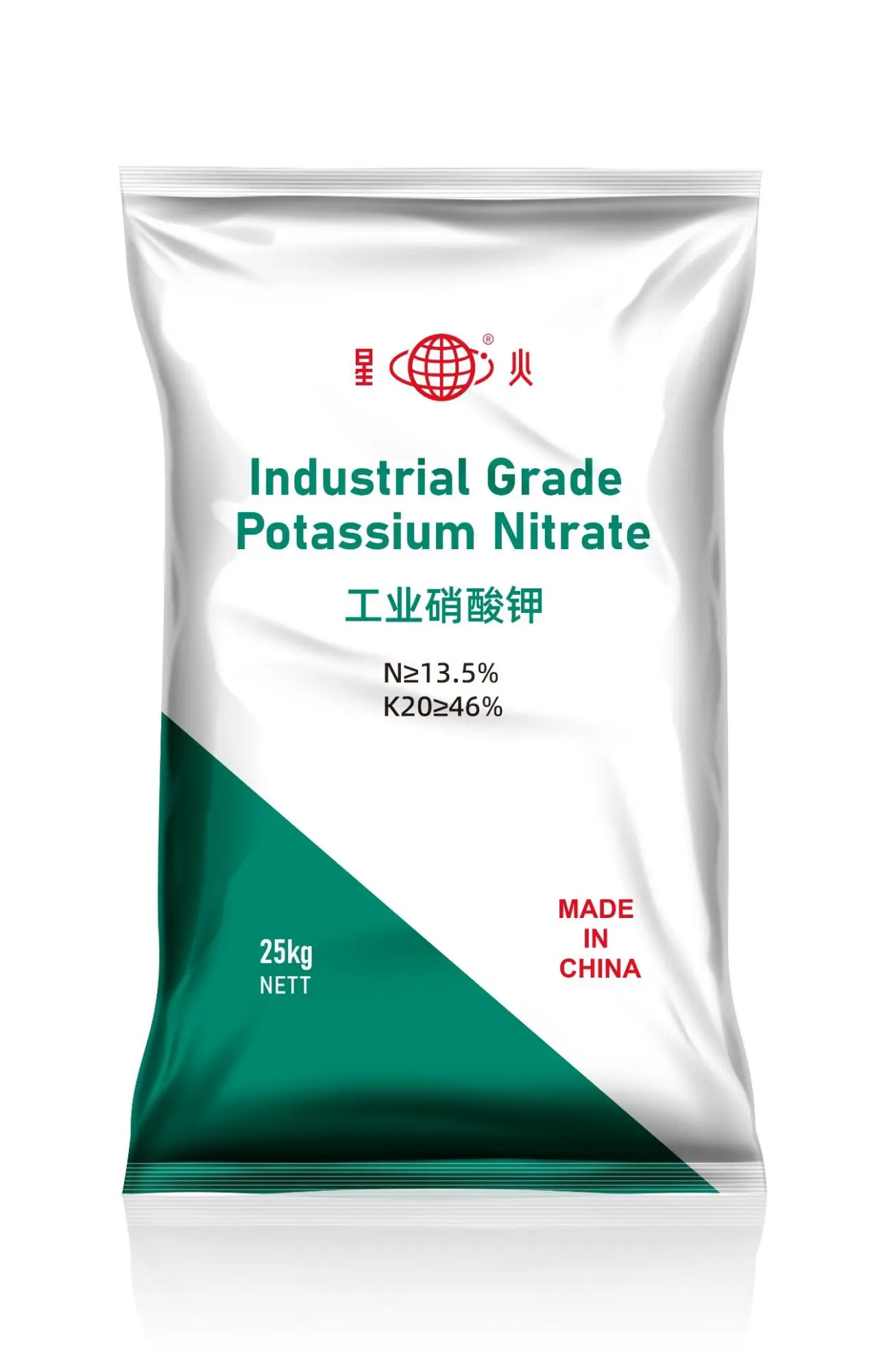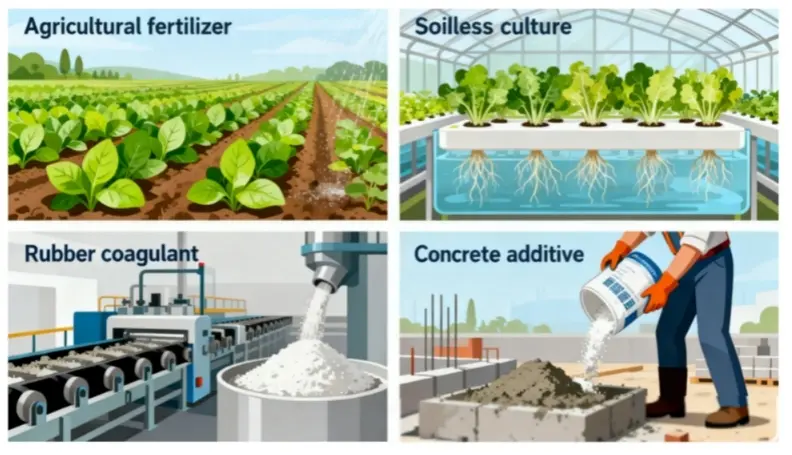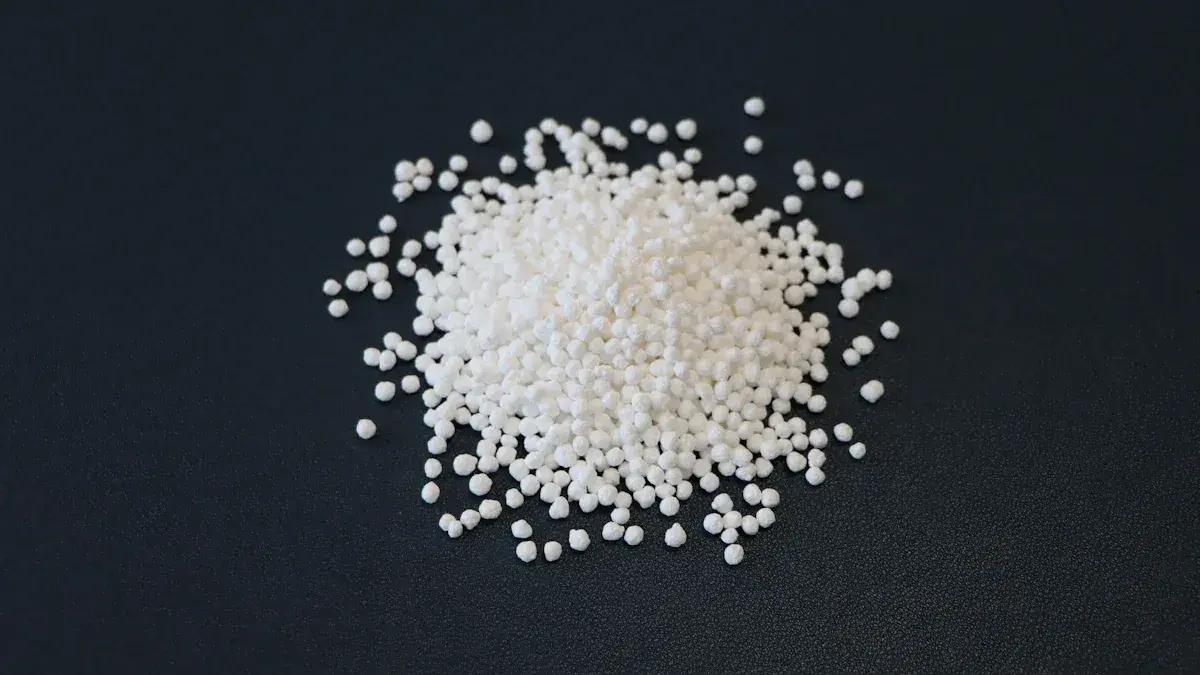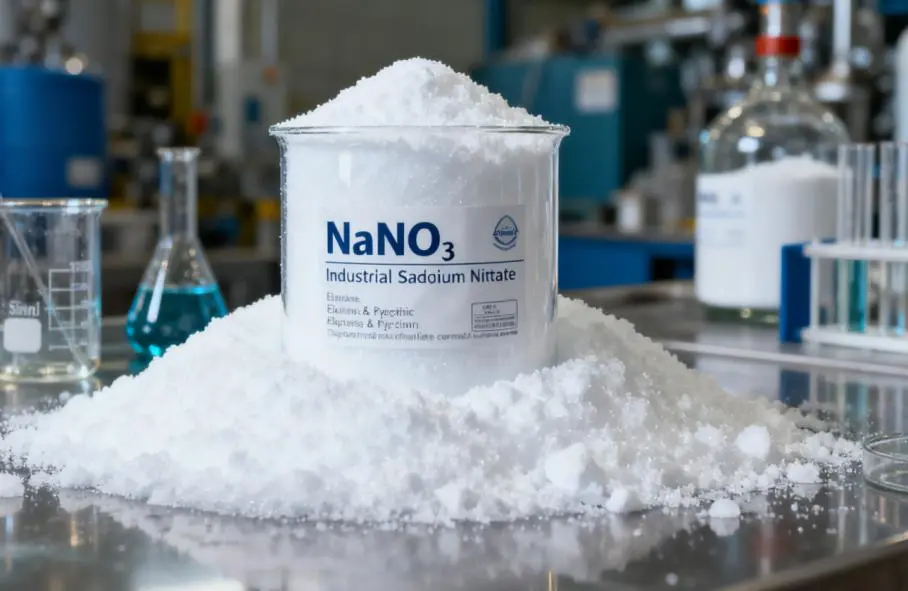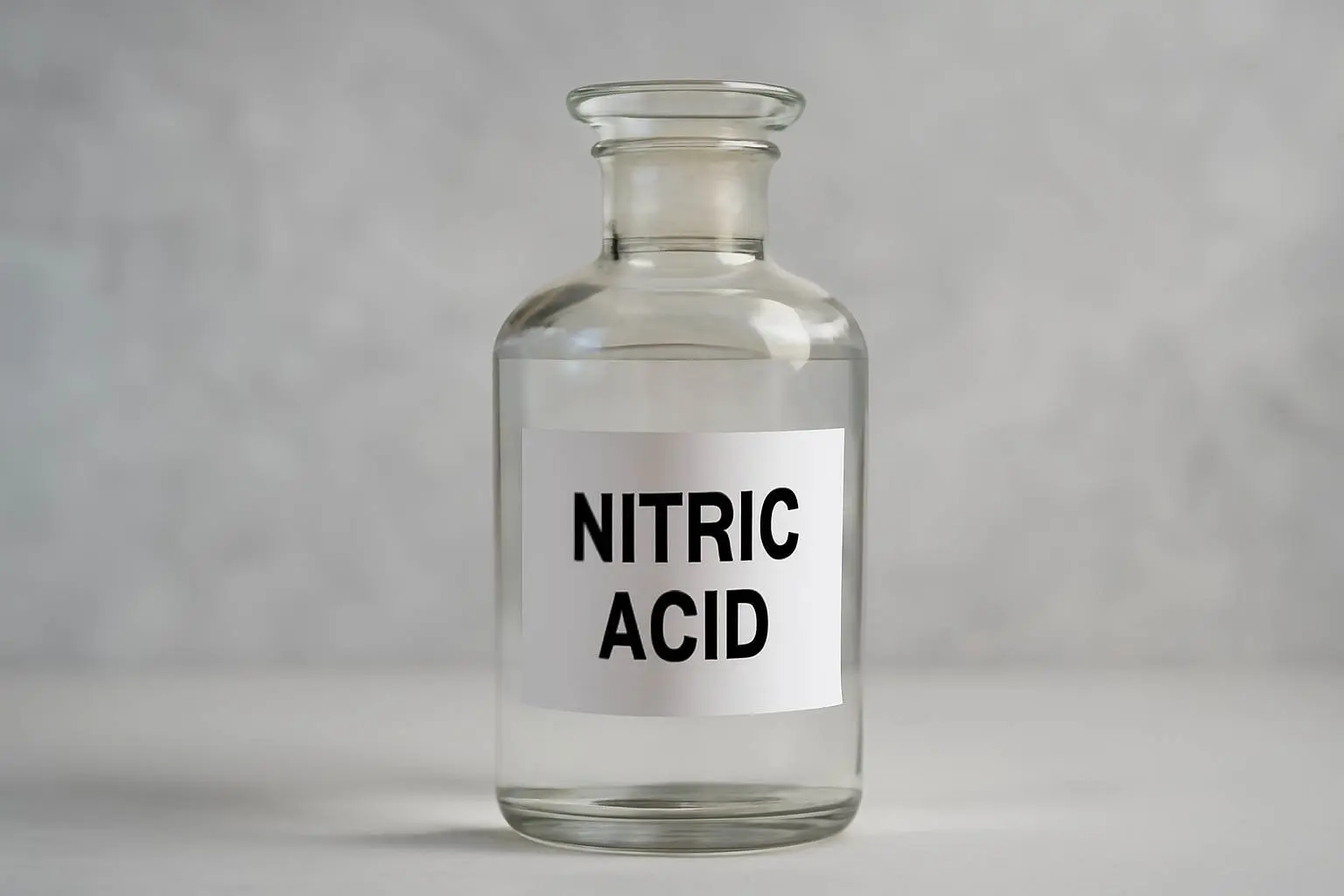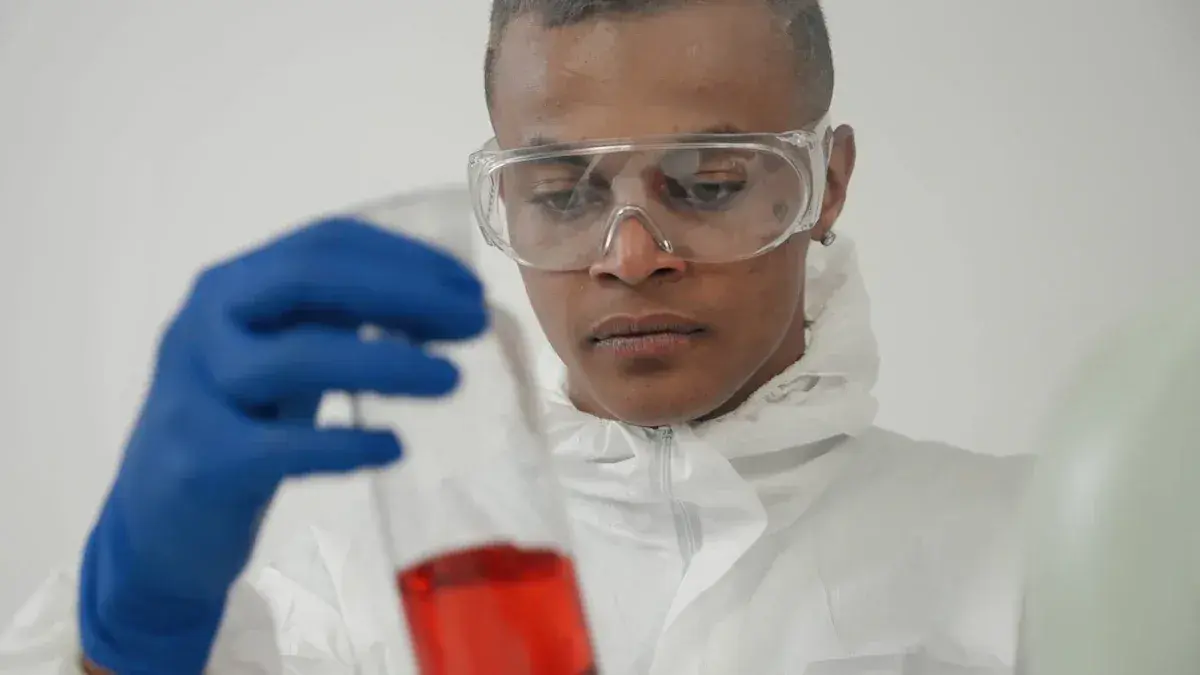Scientific Advances in Nitric Acid Separation and Purification Techniques
Recent research in nitric acid separation highlights machine learning models that optimize liquid-liquid extraction, improving efficiency and purity.
Scientists leverage data-driven techniques to enhance process accuracy and sustainability.
Industrial breakthroughs include catalytic oxidation, electrochemical synthesis, and circular economy integration.
| Breakthrough | Impact on Industry |
|---|---|
| Catalytic Oxidation | Reduces emissions |
| Electrochemical Synthesis | Lowers energy use |
| Circular Economy | Minimizes waste |
Nitric Acid Separation: Traditional Challenges
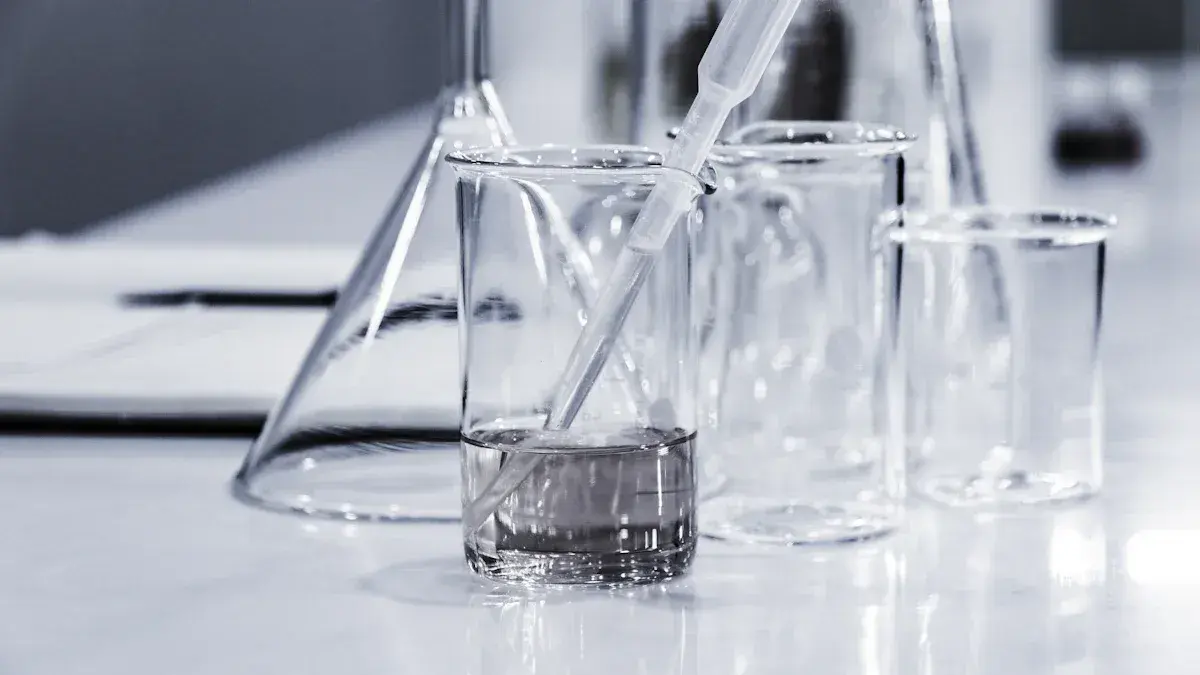
Conventional Methods and Their Limitations
Industrial processes have relied on several conventional methods to separate nitric acid from complex mixtures. These methods include acid-base neutralization, precipitation, ion exchange, membrane filtration, and adsorption. Each technique presents unique challenges. Acid-base neutralization introduces unwanted ions, while precipitation and crystallization demand high energy and pretreatment. Ion exchange resins can remove metals and organics but often require longer processing times and have limited capacity. Membrane filtration offers high selectivity but suffers from membrane fouling, which increases operational costs. Adsorption works efficiently across a wide pH range, yet separating adsorbents from metals remains difficult.
Note: Conventional nitric acid treatment removes metal impurities effectively but can damage material structures, leading to higher costs and environmental concerns.
| Technical Challenge | Description | Impact on Nitric Acid Separation |
|---|---|---|
| Formation of Acetic Acid | Acetic acid forms as a byproduct, especially under radiation. | Reduces purity and reuse potential. |
| Resistance to Breakdown | Acetic acid resists thermal decomposition during heating. | Complicates separation and recovery. |
| Radiation-Induced Decomposition | γ-radiation increases acetic acid concentration. | Increases contamination and complicates separation. |
| Limitations of Traditional Methods | Neutralization, precipitation, and extraction have low efficiency and produce waste. | Reduce process efficiency and complicate operations. |
| Complex Chemical Environment | Diverse ions in solutions challenge selective separation. | Hinders recovery and purity in nuclear reprocessing. |
Purity and Efficiency Obstacles
Traditional purification techniques struggle to achieve high purity levels. Neutralization precipitation and evaporation concentration often fail to separate nitric acid from acetic acid, resulting in high costs and energy consumption. Ion exchange resins, while selective, degrade after repeated use and have limited adsorption capacity. Distillation faces challenges due to the volatility of Nitric Acid And the associative properties of acetic acid, leading to poor separation efficiency. Increasing the organic phase in extraction does not improve nitric acid distribution, and the purification coefficient for acetic acid drops sharply over time, making it difficult to maintain high purity.
Traditional methods generate sludge, which adds disposal costs.
Scalability is limited by material degradation and environmental impact.
Environmental and Safety Issues
Legacy separation and purification processes for nitric acid pose significant environmental risks. Strong leaching agents, such as sulfuric acid, can contaminate soil and water. These processes account for a large portion of the environmental impact in hydrometallurgical operations, with high resource and energy consumption. Large volumes of wastewater are produced, increasing the risk of freshwater aquatic ecotoxicity. Adsorption steps also contribute to environmental impacts, though improvements in sorbent lifetimes can help. The overall footprint includes chemical usage, wastewater generation, and ecotoxicity, highlighting the need for greener and more sustainable technologies.
Nitric Acid Purification: Breakthrough Techniques in 2025
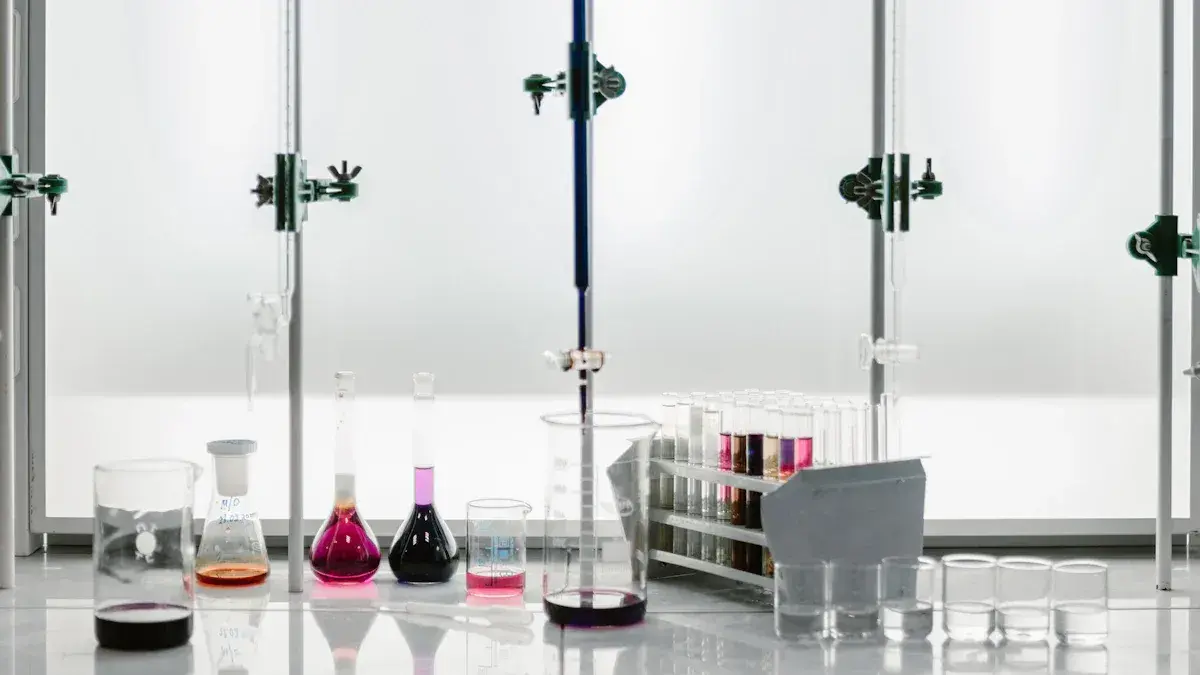
Multi-Stage Electrodialysis Developments
Multi-stage electrodialysis has transformed the purification of nitric acid. Engineers designed systems that use bipolar and anion exchange membranes, arranging them to mimic distillation. This setup allows ions to move in opposite directions, which increases separation efficiency. Operators can adjust the reflux flow rate and electrical current to boost concentration ratios and purity. Recent experiments achieved up to 99.88% purity and 97.48% recovery, meeting strict reuse standards in spent fuel reprocessing. The process operates continuously, unlike older batch methods. It uses less energy and generates less waste than acid-base neutralization or precipitation.
Multi-stage electrodialysis offers a simpler and more environmentally friendly solution for nitric acid purification.
| Metric | Value / Range | Notes / Comparison |
|---|---|---|
| Overall concentration factor | ~200× | From dilute feed to concentrated product |
| Single stage concentration | Stage 2: ~3×; Stage 3: ~1.5× | Osmosis limits later stages |
| Maximum concentration by ED | 2.15 wt% NH4+-N | Limited by membrane capacity |
| Energy consumption (SEC) | 1.89–6.14 kWh/kg NH4+-N | Lower than Haber–Bosch process |
| Operating cost | <$0.90/kg NH4+-N | Comparable or lower than Haber–Bosch |
| Greenhouse gas emissions | Up to 95% reduction possible | Using renewable electricity |
| Challenges | Increased ohmic resistance at dilute stages | Higher voltage and energy demand |
| Potential solutions | Redox-coupled reactions, EDI | Reduce resistance and energy use |
Researchers continue to improve the technology by integrating hollow fiber membrane contactors and exploring redox-coupled reactions. These advances help reduce energy consumption and increase scalability.
Electrochemical Conversion of Nitrogen Oxides
Electrochemical conversion methods now allow direct synthesis of nitric acid from nitrogen oxides. Scientists developed a vapor-feed electrochemical process that produces commercial-grade nitric acid (32 wt%) from nitric oxide oxidation. This method uses a membrane electrode assembly electrolyzer with a carbon-based catalyst. The process achieves a Faradaic efficiency of 87.5% under near-ambient conditions and does not require chemical additives or extra purification steps. Nitrous acid acts as a key intermediate, which shifts the pathway away from traditional thermocatalytic NO2 methods.
The system operates at low temperatures and supports flexible, "plug and play" designs.
High-purity nitric acid is produced directly from NO and water.
The process reduces energy use and environmental impact compared to older high-temperature methods.
Commercial potential is strong, especially for mining and chemical industries.
Electrochemical conversion supports a nitrogen circular economy by turning industrial NO waste gases into valuable nitric acid for immediate reuse.
Advanced Membrane and Material Innovations
Material scientists have introduced advanced membranes that improve selectivity and durability in nitric acid purification. They use natural nanomaterials such as chitin, cellulose, and silk fibroin to enhance mechanical strength and biodegradability. These membranes show higher selectivity, making acid separation more effective. Nanomaterials increase hydrophilicity, which boosts water flux and permeability. The membranes also resist fouling and maintain hydraulic stability, reducing maintenance needs.
Nanocomposite membranes combine polymers with nanoparticles for greater strength and selectivity.
Surface roughness and controlled pore size enable better contaminant removal.
Techniques like surface deposition and matrix embedding functionalize membranes for higher performance.
Natural nanomaterials add sustainability and improve recovery rates.
Researchers continue to develop eco-friendly nanomembranes that offer improved recovery and long-term durability.
Green Chemistry Integration
Green chemistry principles now guide the design of nitric acid purification processes. Nitrous acid plays a central role in reducing hazardous waste and improving resource efficiency. Its use aligns with sustainable chemical design by minimizing harmful byproducts. Nitrous acid also helps recover metals from waste streams, supporting circular economy goals. Water conservation improves as wastewater treatment and reuse become possible, creating closed-loop systems.
| Treatment Method | Environmental Impact | Energy Efficiency (Exergy Analysis) | Notes on Green Chemistry Integration |
|---|---|---|---|
| Extended Absorption | Best overall reduction of NOx emissions | Highest exergy efficiency and energy recovery | Minimizes hazardous emissions and optimizes energy use |
| Selective Catalytic Reduction (SCR) | Reduction of NOx but unsatisfactory overall results | Lower exergy efficiency, additional emissions | Needs improvement for green chemistry alignment |
| Non-Selective Catalytic Reduction (NSCR) | Treats NOx and N2O emissions, potential for improvement | Moderate exergy efficiency, catalyst improvements needed | Potential for better green chemistry integration |
Innovations in nitrous acid production and application help reduce landfill waste and promote long-term sustainability. These practices support energy savings and resource recovery, making nitric acid purification more environmentally responsible.
Nitric Acid Performance Improvements
Efficiency and Yield Enhancement
Researchers have developed several strategies to improve efficiency and yield in nitric acid separation. Reactive distillation combines reaction and separation steps, which increases reaction yields and lowers energy use. Membrane reactors use semipermeable membranes to separate products during the reaction, making the process more efficient. Integration of reaction and separation steps, such as catalytic distillation, helps boost yields and cut costs. Advanced catalyst design, including bimetallic and multifunctional catalysts, increases activity and selectivity. Reactor design improvements, like microreactors and structured reactors, enhance mass and heat transfer. Process intensification techniques combine multiple steps into single units, reducing capital costs. Sustainability remains a priority, with energy-efficient processes and alternative production routes lowering environmental impact.
Reactive distillation improves yield and reduces energy use.
Membrane reactors enhance efficiency for difficult reactions.
Advanced catalysts increase selectivity and stability.
Microreactors enable better control and transfer.
Achieving Ultra-High Purity
Ultra-high purity in nitric acid production supports demanding applications in electronics and pharmaceuticals. Scientists use advanced membrane technologies to remove trace contaminants. Nanocomposite membranes with controlled pore sizes filter out unwanted ions. Continuous monitoring systems track purity levels in real time. Operators adjust process parameters to maintain strict standards. These innovations help industries meet global quality requirements.
Tip: Continuous monitoring and advanced membranes ensure consistent ultra-high purity for sensitive uses.
Energy Reduction and Waste Minimization
Modern nitric acid purification systems focus on reducing energy consumption and minimizing waste. Multi-stage electrodialysis and membrane-based processes use less energy than traditional methods. Process intensification combines steps, which lowers resource use and waste generation. Engineers design systems to recycle water and recover valuable byproducts. These improvements support sustainability and lower operational costs.
| Improvement | Benefit |
|---|---|
| Multi-stage electrodialysis | Lower energy use |
| Process intensification | Less waste, reduced costs |
| Water recycling | Supports sustainability |
Nitric Acid Applications and Industrial Impact
Fertilizer and Chemical Manufacturing
Manufacturers rely on advanced separation and purification techniques to improve fertilizer production. Solvent extraction using TCHDGA removes calcium nitrate from phosphoric acid, which is produced by the nitric acid process. This method reduces calcium concentration below 5 mg/L, allowing phosphoric acid to meet industrial-grade standards. Producers can now use high-purity phosphoric acid for large-scale fertilizer manufacturing. Compared to sulfuric and hydrochloric acid processes, the nitric acid process generates fewer unwanted by-products. This improvement increases phosphorus leaching efficiency and reduces environmental pollution, such as phosphogypsum accumulation. Chemical plants benefit from higher purity inputs, scalable production, and minimized environmental impact.
| Benefit Aspect | Description |
|---|---|
| Emission Reduction | High Efficiency Absorption lowers nitrogen oxides in tail gases. |
| Yield Improvement | Nitric acid yields increase by 1–3% with optimized purification. |
| Equipment Size Reduction | Absorber columns shrink by up to 35%, making plants more cost-effective. |
| Process Efficiency | Catalytic reduction methods cut operational costs. |
| Environmental Compliance | Enhanced purification supports stricter regulations. |
| Product Quality | Process optimization improves concentration and purity. |
Environmental Remediation and Pollution Control
Purified nitric acid serves as a powerful oxidizing agent in environmental applications. Treatment with this chemical introduces oxygen-containing groups onto carbon nanotubes. These modifications increase the adsorption capacity for heavy metals such as lead, cadmium, nickel, and copper. Remediation teams use these enhanced materials to remove pollutants from water and soil. The process improves pollutant adsorption and supports cleaner environments.
Tip: Chemical modification with nitric acid boosts the effectiveness of carbon nanotubes in pollution control.
Pharmaceutical and Electronic Grade Uses
Ultra-high purity nitric acid plays a critical role in pharmaceutical and electronic manufacturing. Pharmaceutical companies use it to synthesize active components, handling highly reactive chemicals in closed processing units with strict safety protocols. Semiconductor manufacturers depend on ultra-pure chemicals for producing high-quality electronic components. Advanced purification technologies and continuous quality controls ensure compliance with regulatory standards and maintain product reliability.
| Industry | Key Application | Challenges Faced | Safety Measures |
|---|---|---|---|
| Pharmaceutical | Synthesis of Active Components | Handling reactive chemicals | Closed units, safety protocols |
| Electronic | Ultra-pure chemical production | Maintaining purity, compliance | Advanced purification, strict controls |
Nitric Acid Future Directions
Emerging Technologies and Materials
Researchers continue to push boundaries in nitric acid purification. They develop advanced distillation methods, including sub-boiling distillation, to achieve ultra-high purity. Ion exchange resins and ultrafiltration membranes now remove impurities at very low concentrations. Real-time monitoring uses high-sensitivity instruments and AI-driven analytics to detect contaminants at parts-per-trillion levels. Digital integration with IoT sensors and digital twins helps optimize production and maintenance. Manufacturers customize nitric acid formulations for specific semiconductor processes. Localized production strategies improve supply chain resilience and reduce lead times. Industry leaders focus on meeting strict purity standards for next-generation electronics while addressing environmental and supply chain challenges.
Advanced purification technologies deliver higher chemical purity.
Real-time analytics and digital tools enhance quality control.
Custom formulations support specialized manufacturing needs.
Scale-Up and Commercialization Prospects
Companies invest in scaling up new purification technologies. They use recycling and regeneration systems for spent nitric acid to lower costs and environmental impact. Digital tools streamline supply chain management and predictive maintenance. Strategic moves toward localized production help reduce delays and improve reliability. Manufacturers tailor packaging and delivery to meet the needs of semiconductor and pharmaceutical clients. Commercialization efforts focus on meeting global purity standards and supporting sustainable growth.
Advancing Sustainability in Industry
Sustainability drives innovation in nitric acid purification. Technological upgrades in Asia Pacific have reduced emissions by nearly 22% since 2020. Governments support cleaner chemical processing through subsidies and policies. Companies adopt eco-friendly materials, circular economy practices, and energy-efficient systems. AI and automation improve operational efficiency and predictive maintenance. Closed-loop systems minimize waste and chemical use. Investments in green chemistry and smart factories attract eco-conscious clients and help meet global regulations. Industry leaders align with global sustainability targets by reducing energy consumption and recycling waste nitric acid.
Eco-friendly production methods support environmental goals.
AI and automation reduce costs and waste.
Green chemistry solutions promote long-term sustainability.
Recent advances in membrane technology, such as silicon carbide ceramics, have improved selective water removal and reduced energy use. Industries now benefit from higher purity standards and better environmental management. Ongoing innovation, including catalytic emission controls, supports cleaner air and sets new benchmarks for sustainable industrial practices.
FAQ
What is the main benefit of multi-stage electrodialysis in nitric acid purification?
Multi-stage electrodialysis increases purity and recovery rates. Operators use less energy and produce less waste compared to traditional methods.
How do advanced membranes improve nitric acid separation?
Advanced membranes use nanomaterials for higher selectivity and durability. They resist fouling and help achieve better purity in industrial processes.
Why does the industry focus on green chemistry for nitric acid purification?
Green chemistry reduces hazardous waste and saves energy. Companies meet environmental standards and support sustainability by using safer chemicals and closed-loop systems.


